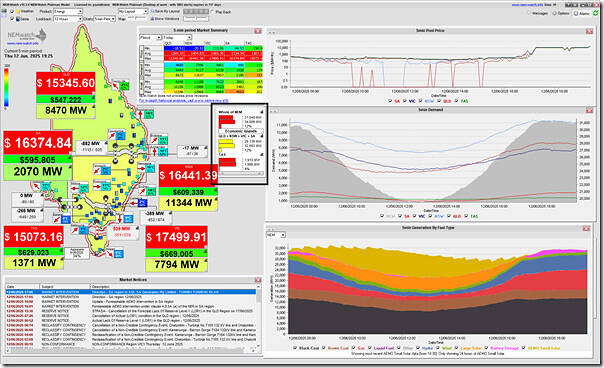Another quick article this evening with a snapshot from NEMwatch at 19:25 (NEM time) on Thursday 12th June 2025 as follows:
In the panel highlighted, we see that (at this dispatch interval):
1) The NEM-wide ‘Market Demand’ is at 31,049MW
2) The NEM-wide Available Generation is at 34,689MW
3) Which means that:
(a) Surplus capacity is 3,640MW;
(b) And a NEM-wide IRPM of 11.72% (rounded to 12% in the display).
(c) Note that the 19:30 dispatch interval saw it drop to 11.32%
… which will make it lower than yesterday evening.
PS1 … it’s dropped further
As at the 20:20 dispatch interval, the lowest the IRPM has reached has been 10.34% in the 20:00 dispatch interval (just lower than 10.35% at 19:55).
So:
1) that’s definitely lower than yesterday evening,
2) and quite low, historically as well (with reference to this ‘Long-range trend of Instantaneous Reserve Plant Margin (IRPM) and focus on Q3 2022 – from GenInsights Quarterly’ from November 2022, which is missing ~2.5 years of recent history).



Victoria as of writing is sitting at the market price cap, the other states are not far behind. It appears the shortfall in capacity is in Victoria and New South Wales, with 1100 and 550MW respectively of demand supplied from other states.